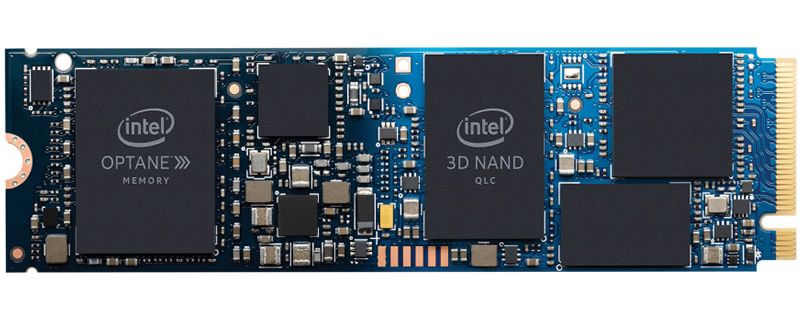Optane h10, new ssd that combines optane and qlc memory

Table of contents:
Intel released details about a new SSD drive called Optane H10. This is not just an SSD, Intel is using a combined QLC and 3D Xpoint flash memory in this unit.
H10 combines Optane memory and 3D NAND modules

Optane H10 was designed in M.2 format, and uses the NVMe 1.1 protocol with a PCIe 3.0 x4 interface. The SSD achieves a sequential read speed of 2400 MB per second and a sequential write speed of 1800 MB per second. The random read and write speeds are respectively 32K and 30K in QD1, in QD2 those speeds are 55K.

The combination of Intel Optane technology with QLC 3D NAND modules in an M.2 unit enables the expansion of Intel's new memory technology in lightweight notebooks and ultra-compact computers such as All-in-One computers and mini PC. The new product also offers a higher level of performance than today's traditional TLC-type 3D NAND SSDs and eliminates the need for a secondary storage device.
Visit our guide on the best SSDs on the market
Compared to a standalone TLC 3D NAND SSD system, Intel Optane H10 memory with solid-state storage enables faster access to frequently used applications and files and better responsiveness with background activity.

Intel Optane H10 memory will come in the following capacities: 16GB (Optane) + 256GB (3D NAND QLC); 32GB + 512GB and another 32GB + 1TB of storage. All would be available throughout this second quarter.
Overclock3D fontMicrosoft surface studio combines intel and arm

The Microsoft Surface Studio hides a 32-bit ARM Cortex M7 processor inside that accompanies the Intel chip for greater efficiency.
Intel optane h10 ssd, intel combines optane and qlc nand technologies

The Optane and QLC section of the Intel Optane H10 merge to form a single volume, with Optane accelerating the files needed.
Asus zephyrus g14 combines ryzen 4000 and geforce rtx

ASUS has just presented its thinnest and lightest gaming laptop to date, the ROG Zephyrus G14, equipped with an RTX and Ryzen 4000 processor.




